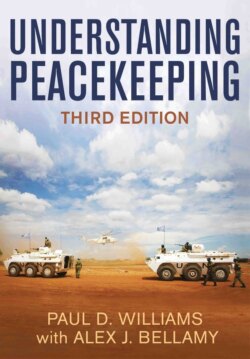Читать книгу Understanding Peacekeeping - Alex J. Bellamy - Страница 53
Conclusion
ОглавлениеA triple transformation of UN peace operations began between 1988 and 1993, comprising quantitative, normative and qualitative changes to their role and scope. During this period the UN gradually took on more, and more complex, operations than in its previous forty years combined. Encouraged by important early successes in Central America, Namibia and Cambodia, the UN’s expansion of peace operations, however, left the organization overstretched. In Angola, Somalia, Rwanda and Bosnia, UN missions were deployed without appropriate mandates, information, political support, troops, resources and guidance. These shortcomings were swiftly and brutally exposed. Although all these episodes were tragic, the historian Paul Kennedy concluded that failing to stop Rwanda’s genocide was ‘the single worst decision the United Nations ever made’ (2006: 103). These very visible failures damaged the UN’s reputation and prompted a retreat from peace operations. There was also a concomitant growth in peace operations conducted by regional arrangements. As one respected analyst put it, at the turn of the millennium, the UN faced a ‘fork in the road’ (Diehl 2000). Should it go ‘back to basics’ or change the ‘basics’ themselves (Tharoor 1995)? The subsequent period of introspection at the UN identified lots of important lessons. This led Kofi Annan to appoint a high-level international panel to assess UN peace operations, chaired by the former Algerian foreign minister Lakhdar Brahimi. This sowed the seeds for a rethink of peace operations, which laid the foundations for their resurgence in the twenty-first century.
